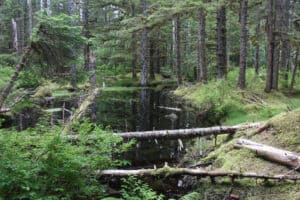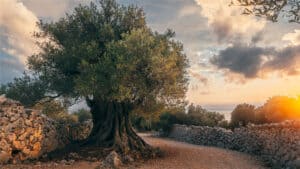Discover the joy of gardening by enjoying blooms in your Idaho garden every year with the perfect selection of perennial flowers. Situated within USDA plant hardiness zones 3-7, Idaho offers a favorable environment for a diverse range of these resilient blooms.
Whether you are a seasoned gardener or just getting started, there’s a wealth of different flowers you can choose from, available to transform your garden into a visual delight. So, in this article, we’ll go over the 13 best perennial flowers that thrive in the diverse Idaho climate.
1. Evergreen Violet (Viola sempervirens)

Boasting small lemon-yellow flowers, the evergreen violet is a gorgeous choice for an Idaho perennial garden.
©Sundry Photography/Shutterstock.com
Native to the western regions of the United States and Canada, including Idaho, the evergreen violet flourishes as a compact perennial. It showcases small, resilient, heart-shaped leaves that are a rich shade of green. Every year, from the early spring to the onset of summer, it dazzles with an abundance of small lemon-yellow blossoms that face outward.
The flowering phase is at its peak during the springtime. In fact, many see its early blossoms as a sign of the incoming spring. It is a cherished choice for shaded gardens or to adorn the gaps between stepping stones.
With a growth range of 2 to 6 inches in height, this shade-loving plant thrives in nutrient-rich, damp, and well-aerated soils. It is an excellent pick for those seeking a perennial flower that promises a stunning display each year in Idaho. For best results, plant anytime throughout spring and fall.
2. Hoary Vervain (Verbena stricta)
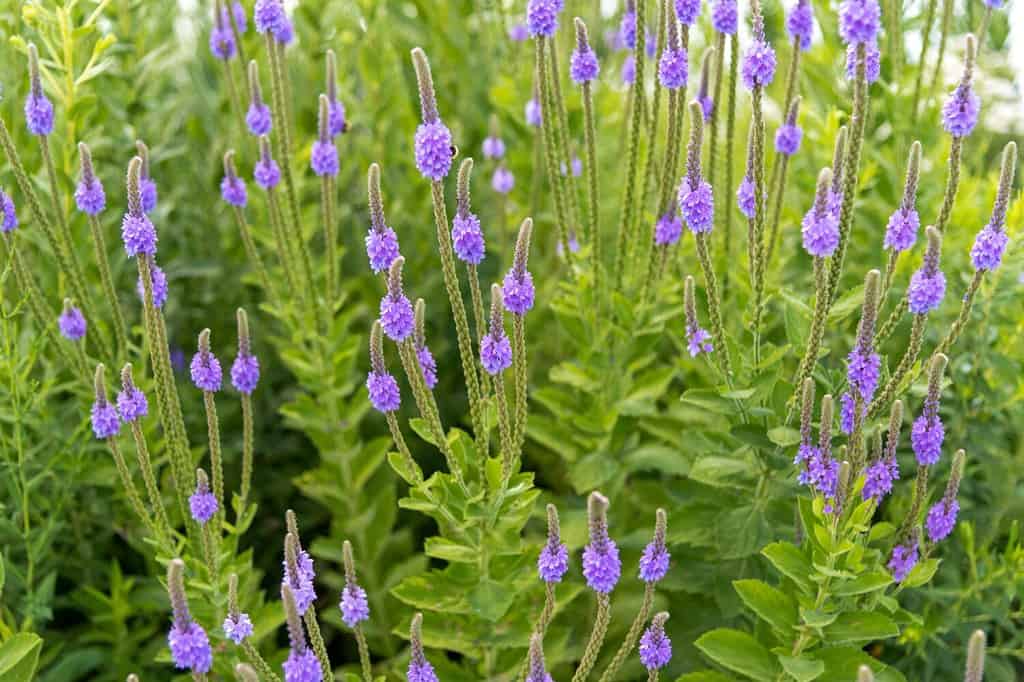
With its striking clusters of blue-purple flowers, hoary vervain blooms from the bottom up.
©Barbara Smits/Shutterstock.com
The hoary vervain is a robust perennial plant that forms dense clusters. Further, it is popular for its striking columns of tiny blue-purple flowers, which appear in tight, terminal clusters resembling pencil-like structures. Also, interestingly, these flowers bloom from the bottom up. The blooms will grace your garden from the later parts of spring to fall. These nectar-rich blossoms are a magnet for various pollinators, including butterflies, birds, and hummingbirds.
With its assembly of flowers standing proudly above a bed of gray-green leaves with a rough, toothed margin, this plant adds charm to any wildlife or butterfly garden. It’s also relatively easy to grow from seeds. If you do, it’s best to sow them in the late fall, as the hoary vervain seeds develop better in cooler climates.
Expect it to reach heights between 2 and 4 feet and spread about 18 to 24 inches wide. It thrives in areas receiving abundant sunlight and prefers soil that balances dry and medium moisture levels with good drainage.
3. White Brodiaea (Triteleia hyacinthina)
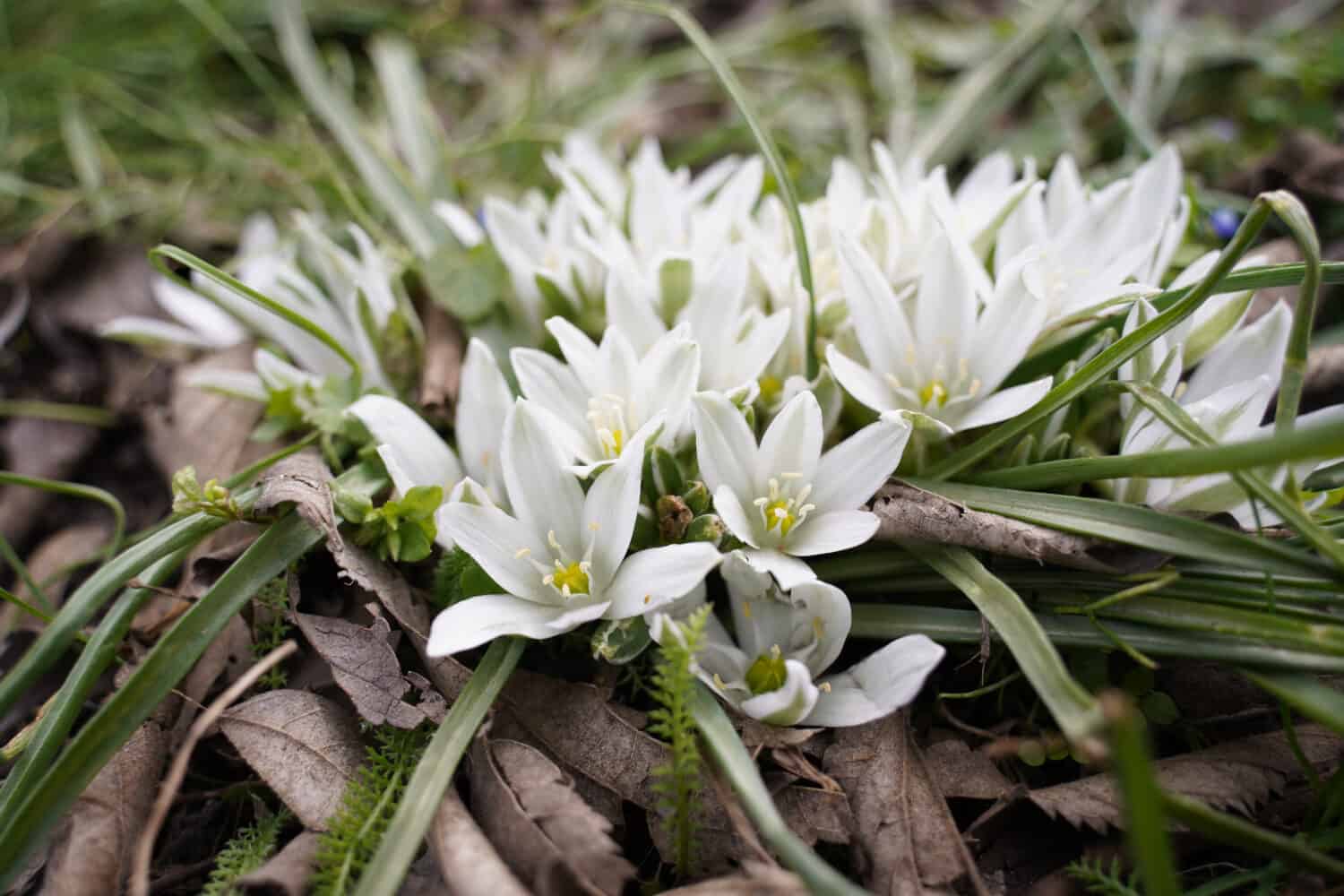
White brodiaea is a perennial that can grow up to an elevation of 6500 feet!
©Ralitsa Zlateva/Shutterstock.com
Originating from the western regions of North America, stretching from British Columbia through Idaho to central California, the white brodiaea is a perennial flower that is perfect for an Idaho garden. During late spring to early summer, it unveils clusters of delicate, creamy white flowers, each spanning about 4 inches across. You’ll notice up to 10 to 40 blooms grouped together in a charming umbrella-like arrangement.
Commonly spotted in various habitats such as meadows, grasslands, fields, and forests up to an elevation of 6500 feet, the white brodiaea is a versatile addition to your Idaho flower garden. Make sure to sow the seeds in a pot before the onset of October, prepping them for eventual transfer outdoors.
This plant can reach a height ranging between 15 and 24 inches. It thrives effortlessly in an array of well-draining soil types and needs plenty of sunlight to flourish. For gardens in regions that experience freezing winters, consider adding a protective layer of mulch. That will help shield the plant from the cold.
4. Western Trillium (Trillium ovatum)
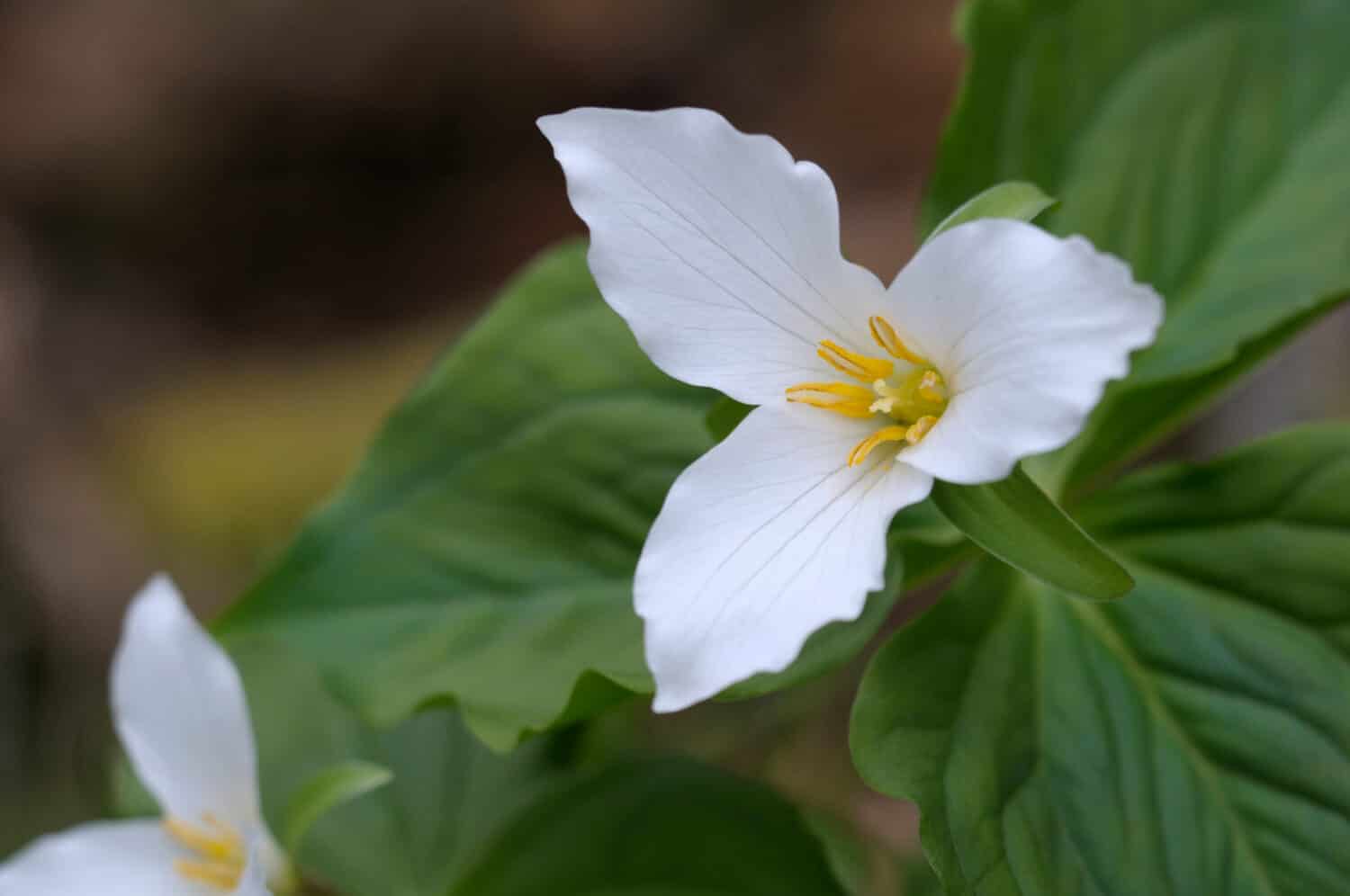
Boasting a wide range of pollinators, the western trillium is a great choice for a perennial flower in Idaho.
©Danita Delimont/Shutterstock.com
The western trillium is a robust perennial plant characterized by its upright stems adorned with three wide, egg-shaped leaves arranged in a circle. In the late winter to late spring, a singular pristine white blossom springs forth from the center. This flower, graced with three backward-curling petals and bright yellow anthers, adds a splash of elegance to your winter flower garden in Idaho.
Known for its longevity, the western trillium attracts a variety of pollinators, including hummingbirds, moths, and bumblebees. The optimal period to plant or separate these plants falls between late summer and early fall. Do note, though, that the western trillium may take three to five years to bloom. It can take even longer to form a clump.
This plant can grow between 10 and 18 inches in height and expands to 8 to 12 inches wide. It performs well in semi-shaded to fully shaded areas. Further, they prosper in well-draining soil that is deep and rich in organic material.
5. Fringe Cups (Tellima grandiflora)
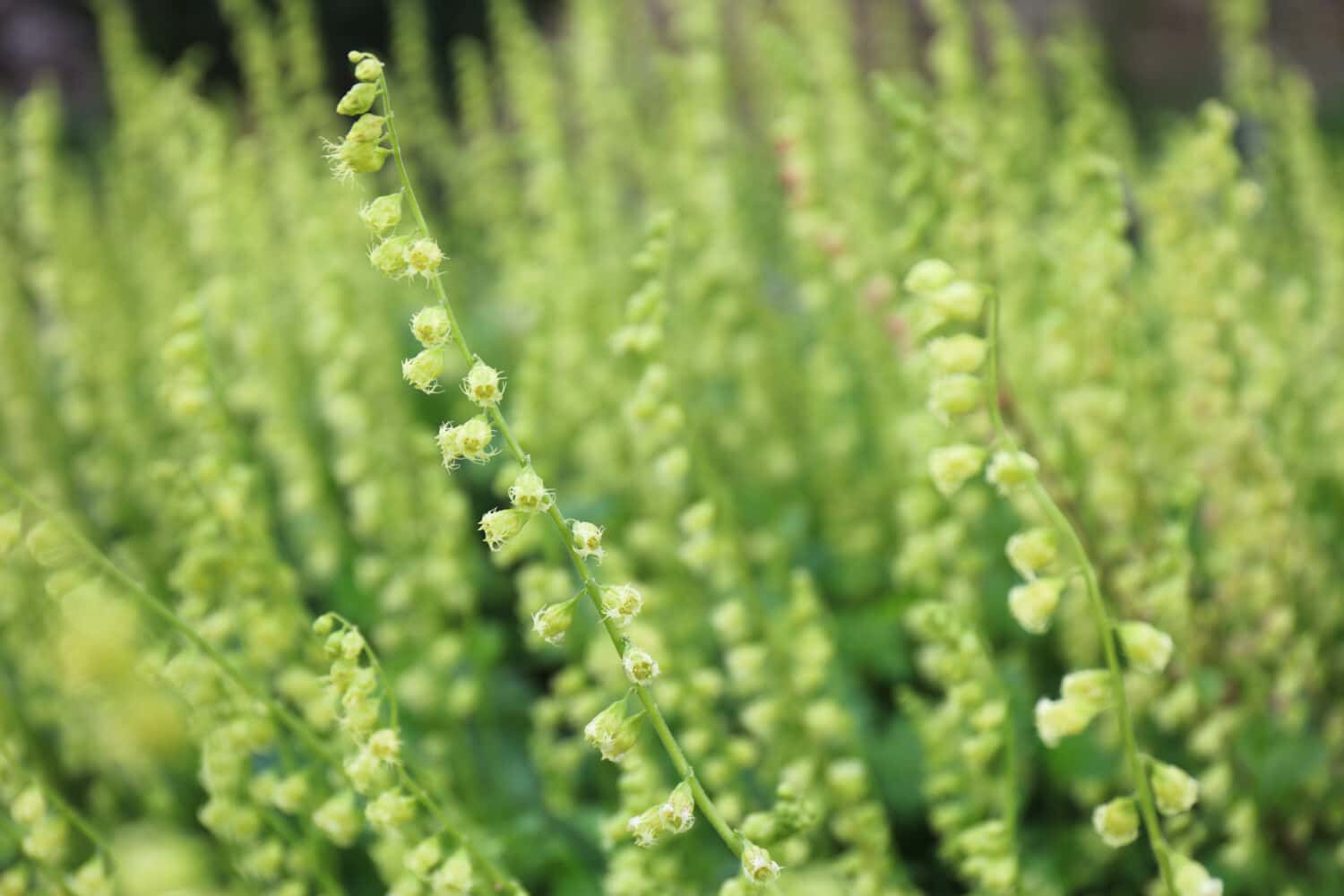
As a compact perennial, fringe cups boast tiny white or cream-colored flowers that turn pink as they mature.
©Massimiliano Finzi/Shutterstock.com
Fringe cups are a compact perennial species. They produce a tidy group of softly hairy, shallow-lobed, and rounded leaves. Between mid-spring and mid-summer, this plant displays elegant stems boasting tiny, urn-like flowers featuring unique fringed petals. These flowers are initially white or cream and transition to a rich pink as they mature.
This perennial is self-seeding, potentially forming extensive colonies when planted in favorable growing conditions. It’s advisable to plant them outdoors either in the fall or at the onset of spring.
The fringe cups plant can reach a height of up to 30 inches and spread about 18 inches wide. This flower thrives best when planted in semi-shaded areas and prefers moisture-retentive soil that is rich in organic matter.
6. Prince’s Plume (Stanleya pinnata)
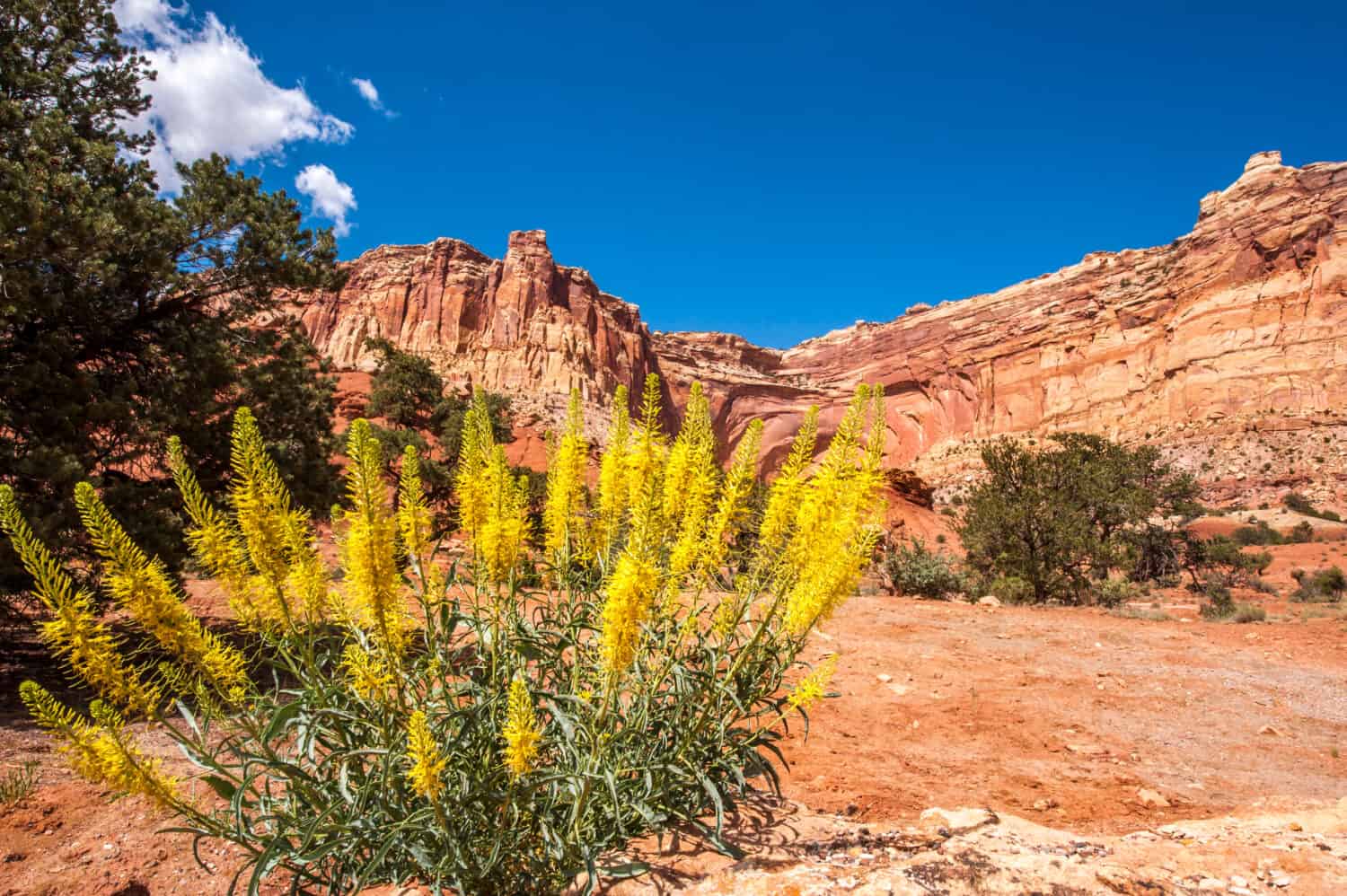
Found in arid areas, including Idaho, the prince’s plume is a perennial that boasts yellow flowers.
©Danita Delimont/Shutterstock.com
The prince’s plume is a majestic perennial found in arid regions, including Idaho. Prince’s plume is popular for its tall stems that hold elegant bright lemon-yellow flower clusters. These blooms grace gardens from spring to fall. They bear a resemblance to spider flowers, thanks to their slender yellow sepals that unfold to showcase four vibrant yellow petals. A noticeable feature of these flowers is the long stamens. These can extend up to an inch, offering a unique and eye-catching display.
A magnet for bees, hummingbirds, moths, and other insects, this plant adds a vivid burst of color to drought-tolerant gardens.
Expect this perennial to grow between 5 and 6 feet in height and spread about 18 to 30 inches wide. It is best suited for sunny locations and thrives in poor, dry, and sandy soils. Prince’s plume is a low-maintenance addition to your Idaho garden.
7. White Panicle Aster (Symphyotrichum lanceolatum)
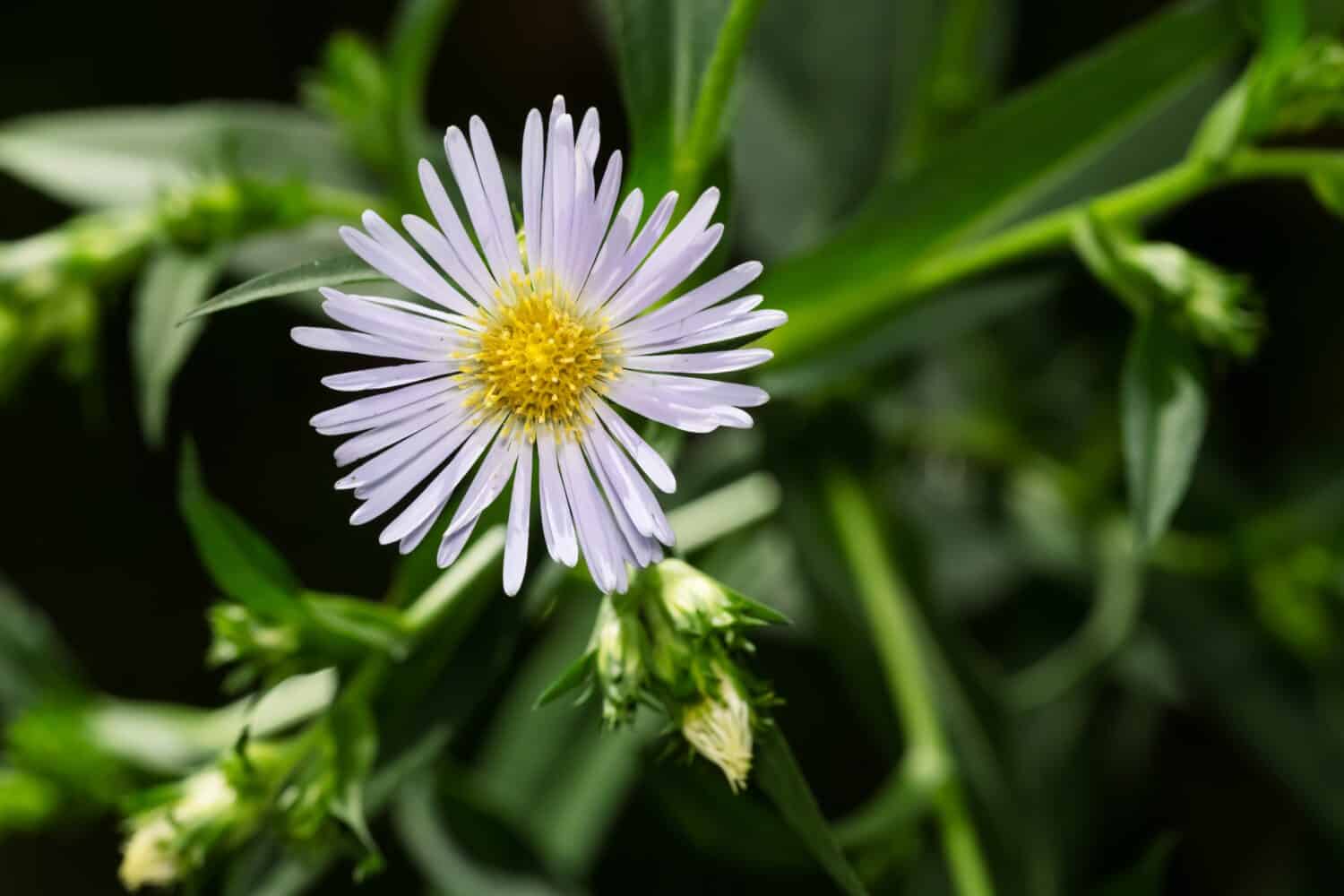
Another great perennial flower for an Idaho garden is the white panicle aster.
©Paul Reeves Photography/Shutterstock.com
The white panicle aster stands as a gorgeous perennial. It is renowned for its numerous branches laden with clusters of minuscule, star-shaped white flowers that grace gardens from mid-summer to fall. Emerging from the tips of stems and upper leaf joints, each floral display comprises 20 to 40 white petals. The petals encircle a central disc filled with soft yellow blossoms. These gradually transition to a reddish color as they mature.
Gardeners should be cautious as the white panicle aster can proliferate rapidly through rhizomes, potentially establishing thick clusters. For this reason, this flower is best planted in fields or meadows. If you’re planning to grow it from seeds, sow them in the spring or at the onset of fall.
This plant can reach a height varying from 2 to 5 feet, flourishing under full sun. It adapts well to a variety of soil types. Such soil types include sandy, loamy, and clay grounds, as long as they offer good drainage and retain a moderate level of moisture.
8. Scarlet Globemallow (Sphaeralcea coccinea)

Boasting beautiful deep orange blooms, the scarlet globemallow is a magnet for bees and butterflies.
©Bryony van der Merwe/Shutterstock.com
The scarlet globemallow is a perennial plant characterized by its vibrant display of deep orange to brick-red blossoms that span about an inch in width. This Idaho perennial flower is a sight to behold from the middle of spring until fall. These blossoms are grouped in compact, short clusters, serving as a lavish feast of pollen and nectar for both bees and butterflies.
Aside from its aesthetic appeal, this plant plays a vital role in preventing soil erosion. It aids in the recuperation of barren and semi-barren lands that have been disrupted. If you’re looking at adding scarlet globemallow to your garden, the best time would be from mid to late spring.
Expect this hardy plant to grow anywhere between 4 and 16 inches in height, reveling in areas that receive abundant sunlight. It prefers dry, well-draining soils, proving to be a resilient choice for your garden.
9. Purple Mountain Saxifrage (Saxifraga oppositifolia)
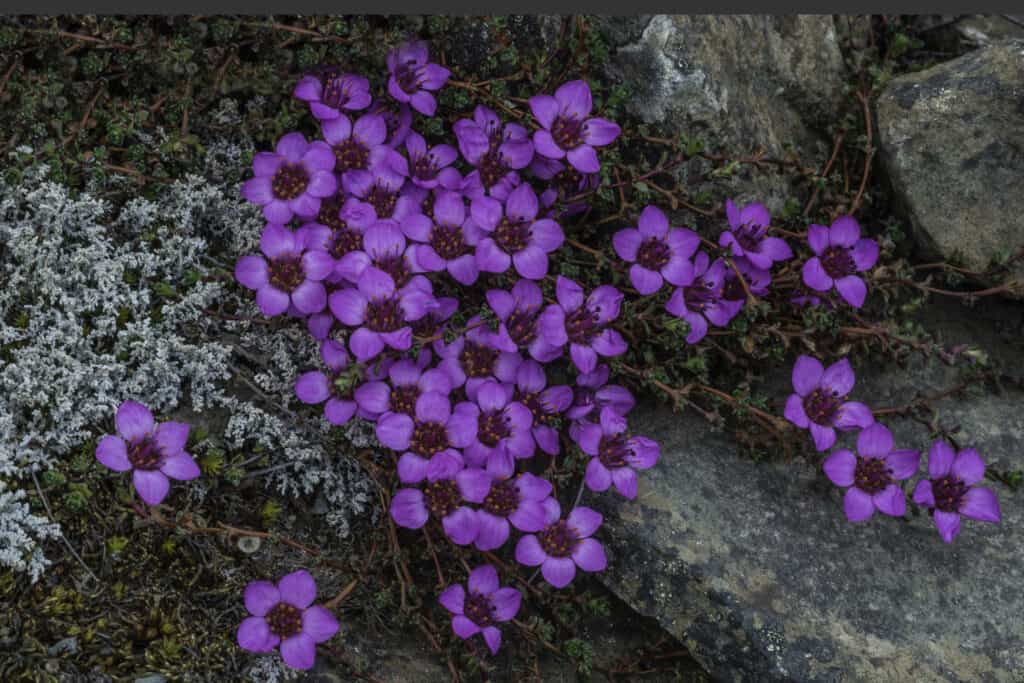
The purple mountain saxifrage is a great choice for rock gardens or pots.
©iStock.com/Gerald Corsi
A favorite in alpine gardens, the purple mountain saxifrage is a mat-forming perennial. It forms a thick layer of small, interlocking, dark green leaves, creating a lush backdrop in any setting. As spring arrives, it sprouts vivid magenta or purple flowers that measure about an inch in diameter. These beautiful flowers are complemented by the contrasting brownish-orange centers.
This perennial flower ranks as a top choice for Idaho gardens, perfect for rock gardens and even pots. For best results, sow seeds either in the spring or the fall.
It only reaches a height of 1 to 2 inches, spreading out to cover a width of about 6 inches. To encourage optimal growth, plant it in a spot with partial shade. Also, make sure the soil is rich in organic matter, has a neutral to alkaline pH, and retains moisture yet offers excellent drainage.
10. Desert Sage (Salvia dorrii)
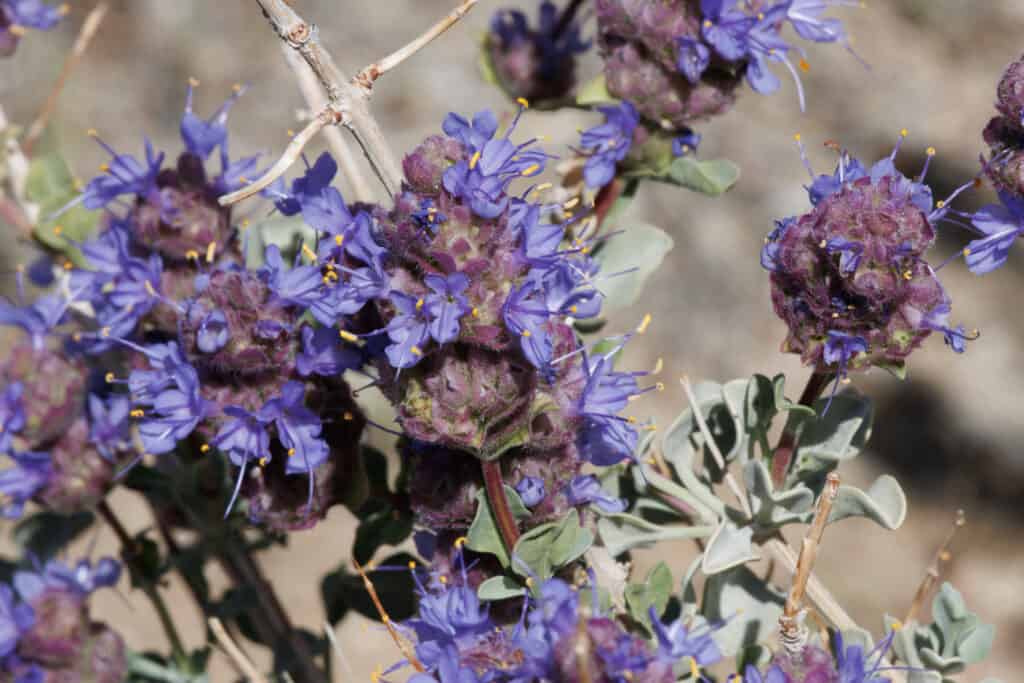
Desert sage is an evergreen perennial with a distinctive fragrance — perfect for Idaho gardens.
©iStock.com/Jared Quentin
Remarkably eye-catching, the desert sage is a woody evergreen semi-shrub. It flaunts slender lance-shaped leaves that bear a silvery gray hue and a distinctive fragrance. The stems are unique, sporting a square shape and carrying magnificent flower spikes that bloom from the late spring until the middle of summer. This plant steals the spotlight with its blue to violet flowers, which are generously sized compared to other sage varieties.
Native to Idaho and the western regions of the U.S., desert sage has a delightful mint-like scent, especially when the leaves are touched or crushed.
This plant grows between 1 and 3 feet in height and spread about 2 to 4 feet wide. Planting it is easy, either by sowing seeds in the fall or by planting cuttings during the spring season. It thrives under the full sun and prefers dry, sandy, and extremely well-draining soil conditions.
11. Scented Penstemon (Penstemon palmeri)
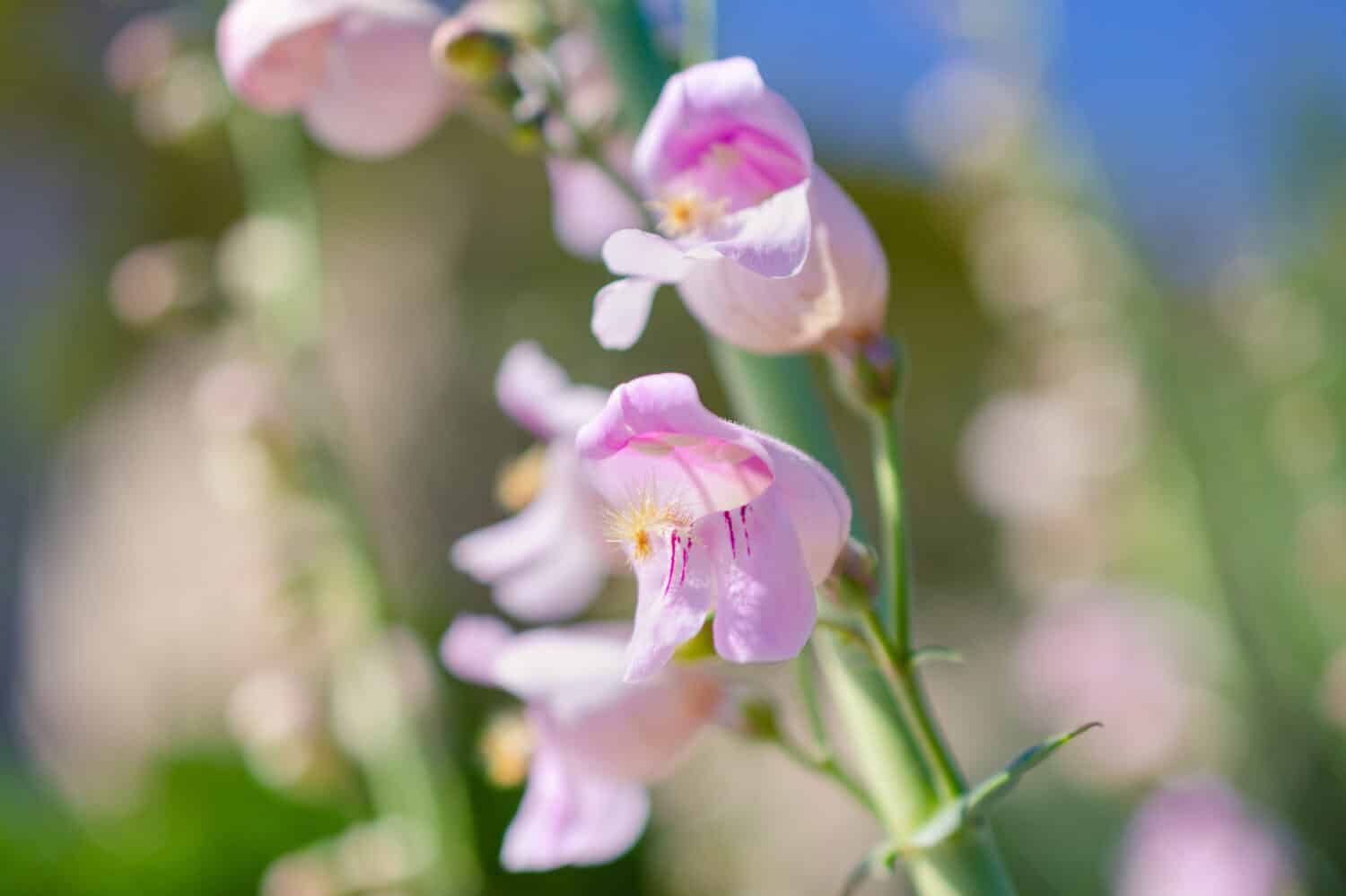
As gorgeous as they look, scented penstemon also smells amazing.
©BernardoSoto/Shutterstock.com
A gorgeous-smelling addition to an Idaho flower garden, the scented penstemon is an evergreen perennial. This plant graces gardens with its branched stems that have a woody texture, showcasing an array of large, aromatic, balloon-like blossoms that come alive in the late spring and early summer. Held in small clusters, each blossom paints a beautiful picture with white and pink hues and features striking red-violet lines that lead to the expansive throat of the flower.
With its evergreen leaves and beautifully perfumed flowers, this type of penstemon serves as a captivating addition to any garden, introducing a pleasing vertical element to decorative spaces.
This plant usually attains heights ranging from 4 to 6 feet and spread out over an area of 2 to 3 feet. It flourishes in areas with full sun to partial shade and prefers dry, rocky, and well-draining soil conditions.
12. Grass Widow (Olsynium douglasii)
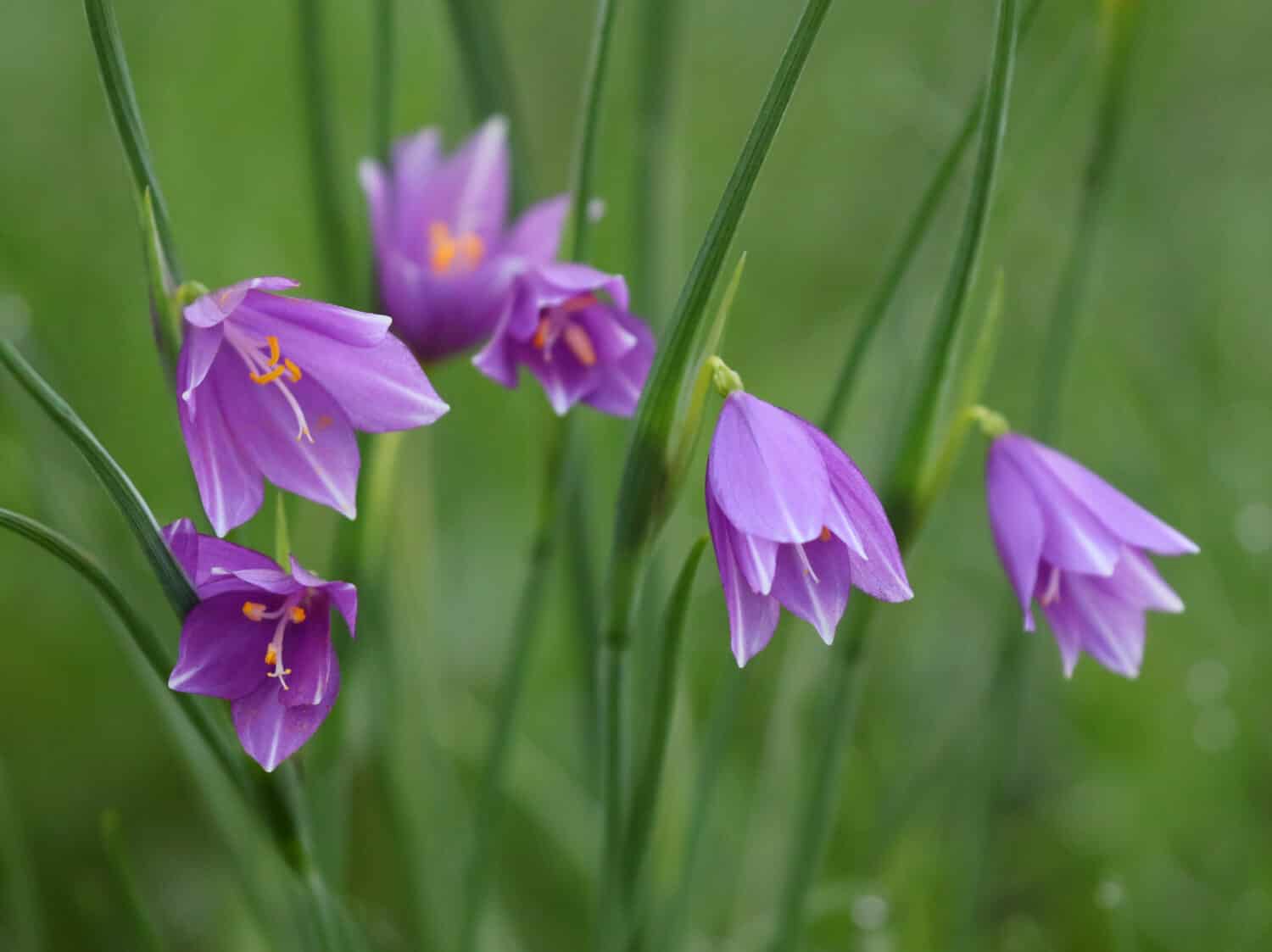
Perfect for rock gardens, grass widow can grow up to around 10 inches tall.
©Randy Bjorklund/Shutterstock.com
The grass widow is a perennial plant known for forming thick clumps, characterized by its narrow, light-green, blade-like leaves. During early spring, it dazzles with its reddish-purple blooms. These glossy, bowl-shaped flowers, with a graceful nodding habit, stand tall on erect stems, surrounded by the plant’s reed-like leaves.
This plant is an excellent choice for embellishing rock gardens or gracing the interiors of alpine houses. In fact, its aesthetic appeal and resilience have earned it the Award of Garden Merit from the Royal Horticultural Society.
The grass widow grows to a moderate height of about 10 inches and spreads approximately 6 inches wide. It thrives in partially shaded areas with moist, organic-rich, moderately fertile, and well-draining soils. Plant grass widow seeds in the fall.
13. Tall Bluebells (Mertensia paniculata)
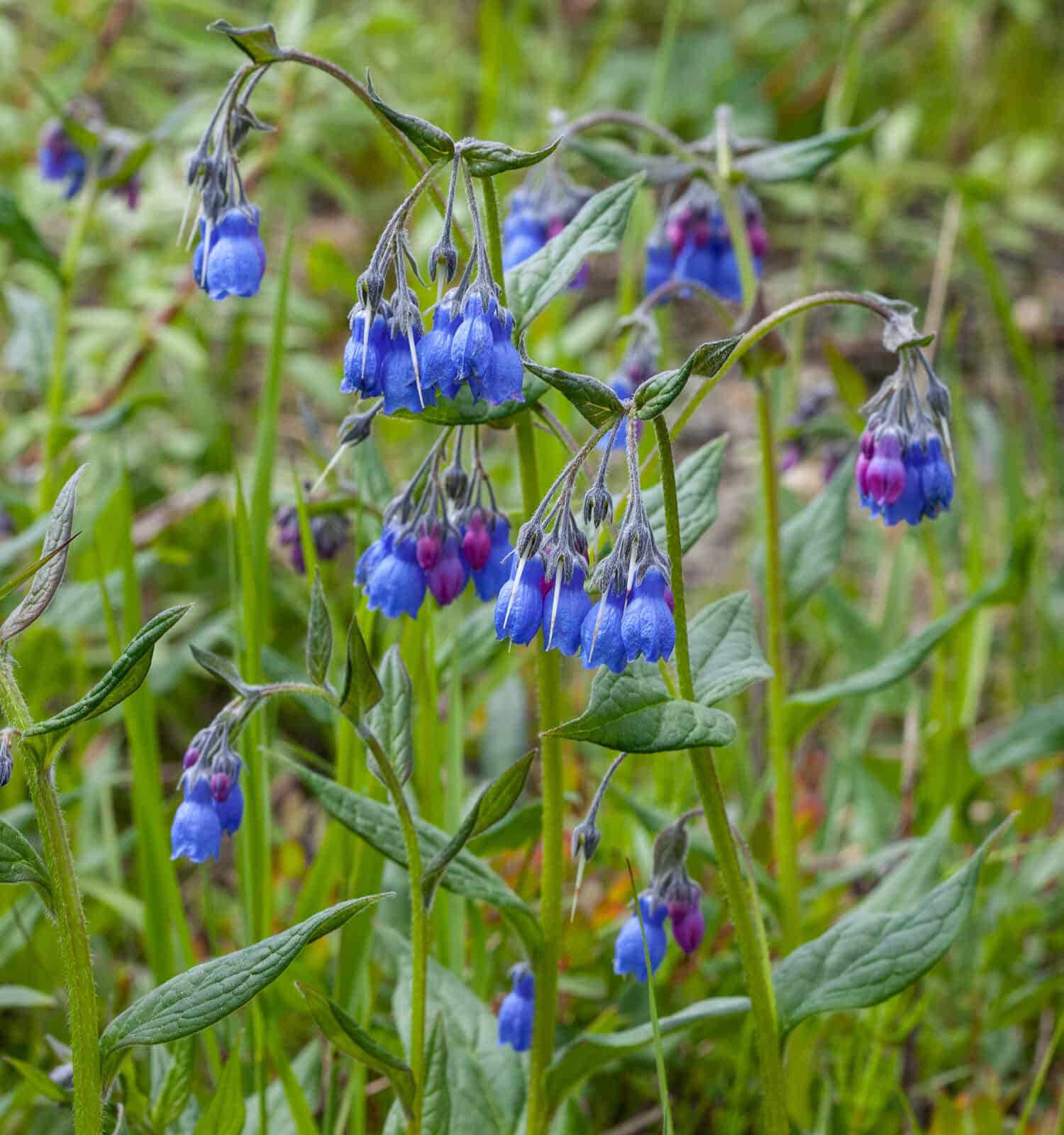
Tall bluebells boast gorgeous drooping, bell-like flowers.
©Melinda Fawver/Shutterstock.com
As you might be able to guess from its name, tall bluebells is a vertical-growing perennial. This flower boasts stems that stand upright, complemented by crinkled, oval-shaped blue-green foliage. Each stem gives rise to one or more groups of drooping, bell-like, blue flowers. These flowers may occasionally appear in shades of pink or white, gracing gardens from late spring through mid-summer. You can enjoy a second round of blooming in a season by trimming the plant back once the initial flowering phase concludes.
This plant grows quickly in gardens, propagating through seeds and rhizomes. It serves as an ideal pick for locations with partial shade.
It achieves a height ranging between 8 and 30 inches, favoring environments with moist to wet soils. The plant can flourish under either sunny or partially shaded conditions. Also, it’s best to plant the tall bluebells in late summer or early fall.
Summary of the Best Perennial Flowers for Idaho
| Number | Flower | Botanical Name |
|---|---|---|
| 1. | Evergreen Violet | Viola sempervirens |
| 2. | Hoary Vervain | Verbena stricta |
| 3. | White Brodiaea | Triteleia hyacinthina |
| 4. | Western Trillium | Trillium ovatum |
| 5. | Fringe Cups | Tellima grandiflora |
| 6. | Prince’s Plum | Stanleya pinnata |
| 7. | White Panicle Aster | Symphyotrichum lanceolatum |
| 8. | Scarlet Globemallow | Sphaeralcea coccinea |
| 9. | Purple Mountain Saxifrage | Saxifraga oppositifolia |
| 10. | Desert Sage | Salvia dorrii |
| 11. | Scented Penstemon | Penstemon palmeri |
| 12. | Grass Widow | Olsynium douglasii |
| 13. | Tall Bluebells | Mertensia paniculata |
The photo featured at the top of this post is © BernardoSoto/Shutterstock.com
Thank you for reading! Have some feedback for us? Contact the AZ Animals editorial team.




